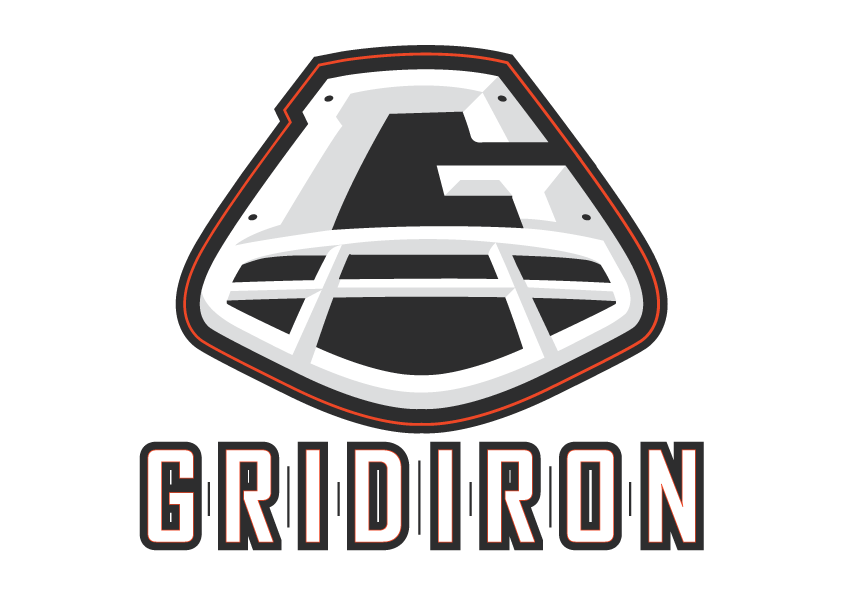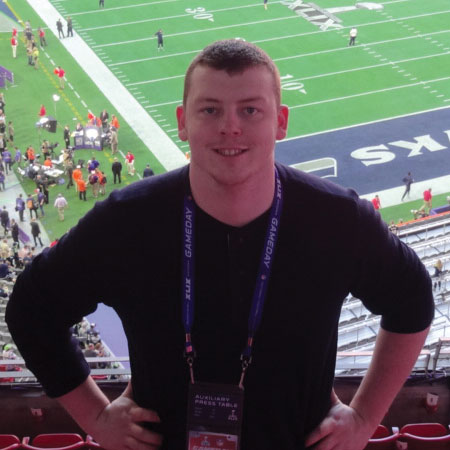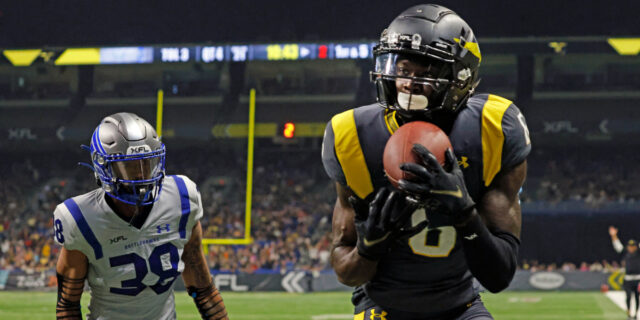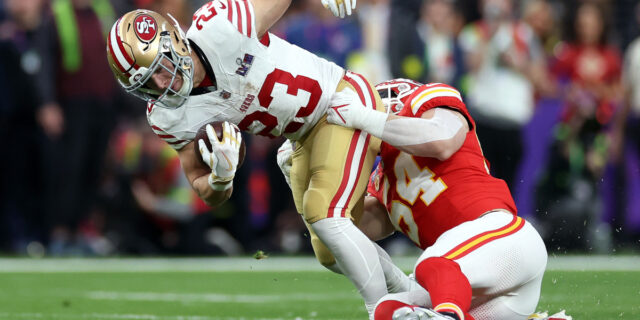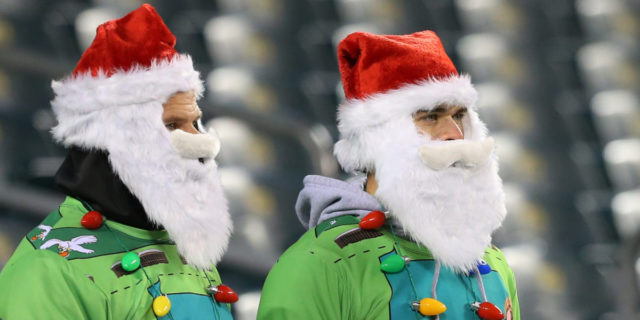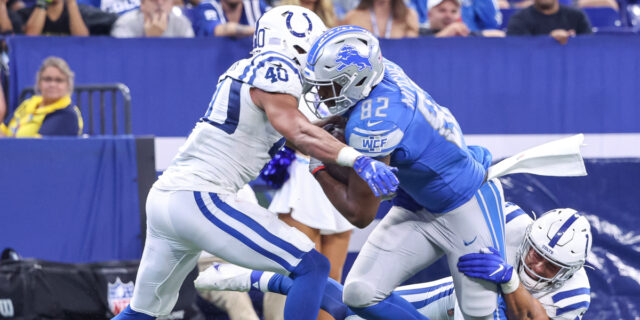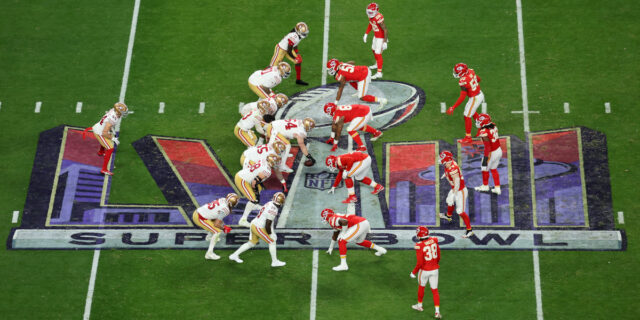
The Weight Of Reputation
This article originally appeared in Issue LI of Gridiron magazine, back in 2019 – for individual editions or subscriptions, click HERE
The phenomenon that created the Dallas Cowboys’ enduring nickname was on display as Gridiron approached Ford Field.
For all the subsequent mythology surrounding America’s Team, from the cheerleaders and buttoned-up face-of-the-franchise Roger Staubach in Tex Schramm’s era to Jimmy Johnson declaring ‘How ‘Bout Them Cowboys?’ after Jerry Jones’ arrival, the nickname’s roots lay in something more simple. In 1978, when cutting together highlights packages, NFL Films producer Bob Ryan noted Dallas were often better supported than home teams for road games and created the term.
And that was the case, incredibly, 41 years after Ryan’s observation, in Week 11 of the 2019 campaign. Streets meant for the Detroit Lions’ Honolulu blue jerseys were lined with white and silver, serving as a precursor to an encounter where every home third down was greeted with a scarcely believable wall of noise that belied the healthy smattering of empty seats.
“The fans are absolutely amazing,” young linebacking sensation Leighton Vander Esch tells Gridiron. “I couldn’t ask to be in a better place, and it already holds a special place in my heart to represent those fans.”
The Detroit game, which the Cowboys edged 35-27, would symbolise why a precocious talent like Vander Esch can become so enchanted by the aura of the franchise. As the fourth quarter wound towards a conclusion, with Dallas contemplating the possibility of a damaging defeat to their playoff aspirations, the supporters’ chorus drove the Cowboys on. “When you’re in an away stadium, and you’re on the field during a defensive play, and you hear ‘De-fense,’ that’s heart-warming,” says Cowboys defensive end Robert Quinn. “Thank goodness they showed up today because we definitely appreciate them, and needed them from time to time.”
“You can’t get any better than America’s Team,” adds Vander Esch. “The franchise is first class all around.” Yet, just as the Lions contest illustrated the magic and value of everything that surrounds Cowboy Nation, it also served as a symbol of the looming identity crisis that contradicts Vander Esch’s proclamation. By merely being in the game, three-win Detroit – without starting quarterback Matt Stafford – fuelled the fire of those believing the Cowboys’ current ilk don’t deserve a reputation fostered by their illustrious predecessors.
The suggestion would rear its head again spectacularly the following week, when – in the minds of some observers – America’s Team of years’ past met their modern-day equivalent.
“We need to get back to where we want to be. There’s no question that we have a lot of talent. But every team is loaded with talent; you have to be disciplined and outwork a team.”
In the locker room at Gillette Stadium, following the New England Patriots’ tense 13-9 Week 12 win over Dallas, wide receiver Julian Edelman – who posted a hype video prior to the contest hinting that America’s Team now resided in Foxborough, Massachusetts – was quizzed. “I don’t know, you know, we’re the Patriots,” he said. “Plymouth Rock is 30 miles from here, that’s where they first came. I know everyone may not love us, but our colours are red, white, and blue.”
Perhaps the greatest weight of evidence supporting any claim is on the field. If there is one thing the United States, whether true or not, holds itself up as a shimmering monument to, it’s excellence and success. No team have exemplified those qualities in the 21st Century like the Patriots, whose six Super Bowl titles since the turn of the Millennium are enough to match the Pittsburgh Steelers’ NFL-leading haul since the game’s inception nearly 53 years ago.
Over a period in which the Patriots have appeared in nine Super Bowls, the Cowboys have featured in just 10 playoff games and won two. “There’s a sense of urgency, no question” says veteran linebacker Sean Lee, who has donned the Cowboys’ famous star since 2010. “We need to get back to where we want to be. There’s no question that we have a lot of talent. But every team is loaded with talent; you have to be disciplined and outwork a team. You have to do it every week in practice and be ready for every single situation.”
Being disciplined and ready in every situation is exactly what Dallas weren’t against New England. In a game that emphasised the difference between the NFL’s former gold standard and its current one, the Patriots triumphed as they often do – by winning the little details – and the modern Cowboys succumbed as they often do: losing the little details.
With torrential rain meeting vicious winds to create dreadful conditions, New England opted against fielding most punts. Dallas, on the other hand, never accounted for the inclement weather with returners often lined up too deep and racing forward to muff seemingly every return. Dallas’ coaching staff apparently didn’t intervene at any stage and, were it not for the fortune of landing on the fumbles, the scoreline might have been significantly wider. While Dak Prescott looked completely unprepared for the inclement weather, struggling with accuracy early and eventually being forced to wear a glove, New England spent Wednesday practicing outside in similar conditions. And then there’s the spectre of the game’s only touchdown being set up by special teams ace Matthew Slater’s blocked punt.
It didn’t go unnoticed. While Edelman was fielding questions over America’s true Team, Cowboys owner Jones – who earlier in the week ruefully spoke of a chance meeting with Patriots coach Bill Belichick in which the then-fired former Cleveland Browns leading man emphasised his availability if the Cowboys job became available – sent a grenade in the direction of Jason Garrett’s coaching staff: “Special teams is totally a reflection of coaching.”
The crux of his angst was perhaps illustrated in another quote: “With the makeup of this team, I shouldn’t be this frustrated.”
“It would be shocking if you knew the size of the cheque I would write if it guaranteed me a Super Bowl. It would be obscene.”
Every summer, Forbes release their annual list of the world’s most valuable sports clubs. There is usually some jockeying for position towards the top end of the charts, but not at No. 1. In 2019, Jones’ Cowboys sat comfortably at the summit for the 13th straight year, becoming the first $5billion franchise in sporting history.
In many ways, the list’s release is a yearly celebration of Jones, whose impact on the fiscal success of not only Dallas but the entire NFL was acknowledged by his induction into the Pro Football Hall of Fame in 2017. Put simply, Jones has been arguably the league’s most influential owner over the last three decades, a driving force behind the otherworldly TV deals enjoyed by the organisation and the man responsible for transforming the off-field fortunes of a team whose losses stood at $1million per month upon his arrival.
Yet Jones didn’t invest every penny he had to buy the team in 1989 as a business opportunity. He did so because of an unquestioned burning love of the game, grounded in being a starting offensive lineman on Arkansas’ 1964 National Championship-winning squad. So, for all Forbes’ acknowledgements and the mammoth stadium dubbed ‘Jerry World’ illustrate the ever-burgeoning strength of Brand Cowboys, they don’t mask failures in the area Jones himself truly judges success: on the field.
Not since the conclusion of the 1995 campaign has Jones stood in the position he really craves; the one all of his billions cannot buy. “It would be shocking if you knew the size of the cheque I would write if it guaranteed me a Super Bowl,” he said in 2018. “And it would be obscene. There’s nothing that I wouldn’t do financially to get a Super Bowl.”
When standing at a podium on the field of Arizona’s Sun Devil Stadium in January 1996, tightly gripping a Lombardi Trophy that felt most definitely his in a way the previous two never did, Jones could hardly have foreseen the purgatory future. At that stage, he was basking in the afterglow of three titles in four years across his first seven as owner.
The third, coming after Johnson’s shock firing that owed much to Jones feeling the head coach wasn’t affording him enough credit for front office moves, validated him emphatically. The credit didn’t go to Barry Switzer, but Jones and the ingenuity of interventions like luring ‘Primetime’ Deion Sanders over from the arch-rival San Francisco 49ers.
Future returns, however, would tell a different story. For Jones has been a constant since that title, the face of Dallas’ front office in a near-25-year era without championships. The Cowboys may have won their third without Johnson – but it was still his team. Adding to the frustration is a belief that perhaps those 1990s iterations might have won even more were it not for Jones and Johnson parting ways.
“Nobody had ever won three Super Bowls in a row and we stood on the cusp of that history,” former fullback Daryl ‘Moose’ Johnston tells Gridiron. “I really think, if [Johnson] had stayed, we would have won another. It was a bitter pill because I knew what we were capable of with Jimmy. We were not the same team when he left and we lost our edge a little. We missed a chance to make history.”
Against that backdrop comes Jones’ current frustration. Dallas have endured painful playoff near-misses in the intervening years – from Tony Romo’s field goal fumble to Dez Bryant’s non-catch – but there was never the current sense of disillusionment. For all it could be argued a potentially great talent was wasted in Romo, he never played on a team as talented as this one, which is the most impressive since those 1990s immortals. “We’re such a young group,” star pass-rusher DeMarcus Lawrence tells Gridiron. “We got a taste of how it feels to get into the playoffs last year, and we want to keep getting better.”
The issue is that, despite lavish pieces, Dallas aren’t getting better. The 2018 Cowboys finished 10-6; the 2019 version are 6-5. That’s despite Lawrence pairing with a resurgent Quinn and Michael Bennett, Byron Jones starring at cornerback and Vander Esch pairing with Lee and Jaylon Smith to form one of the NFL’s most exceptional linebacking groups.
“I love playing with Jaylon,” adds Vander Esch. “He brings a great energy to the game – and passion. We’re both young and feed off each other. He is one of the best linebackers out there and being able to play with him is great. We’re both trying to do big things and are feeding off each other. And Sean’s influence on us both has been big. He helps my game a lot. I’ve never met a guy like him; the character he brings. I have so much respect for him. He pushes on to really improve our own game.”
Lee concurs: “I had a lot of older guys teach me how to play and now that’s my responsibility. They love football, work extremely hard and bring a lot of energy. I feed off that as an older guy.”
On offense, meanwhile, Dallas boast an offensive line that touches the rarefied air occupied by the Great Wall of Dallas on those 1990s teams, as well as three young studs hoping to be remembered as the latest Triplets. Yet Prescott, Ezekiel Elliott and Amari Cooper, despite obvious talent, are a long way from being spoken of in the same breath as Troy Aikman, Emmitt Smith and Michael Irvin for one key reason.
“In the NFL,” Irvin tells Gridiron, “it’s always ‘Who are the next Triplets?’ – the top wide receiver, running back and quarterback. We always tell people that it’s great to have the top players, but ‘The Triplets’ are not just cemented by the position, but by those three players at those positions bringing you three rings. So, it’s ‘triplets’ all the way around; no-one else has been able to do that.”
All of which comes back to the issue’s crux; to America’s Team’s very foundation.
“As a player, you want to walk onto the field and know that you’re prepared. With Landry, we were sure of it. We were never going to be outcoached.”
The 1970s Cowboys were a cultural marvel in which a confluence of factors intersected to create the backdrop that would lead to Ryan coining one of sports’ most significant nicknames. From the sharp contrast between the Cowboys’ cheerleaders and the clean-cut Staubach, who once said he ‘enjoyed sex as much as Joe Namath, just with the same woman’; to the three innovators who oversaw it all: president Tex Schramm, personnel maven Gil Brandt and head coach Tom Landry.
“They were pioneers,” all-time great Ed ‘Too Tall’ Jones tells Gridiron of Schramm, Brandt and Landry. “Their computerised scouting system was the first of its kind, and Coach Landry was a genius; the best coach in the league. He ran the offense, defense and special teams. He programmed his assistants and they programmed us. Several of his assistants went onto be great head coaches themselves, and there’s a reason for that. As a player, you want to walk onto the field and know that you’re prepared. With Landry, we were sure of it. We were never going to be outcoached. You might beat us, but it wasn’t because we weren’t mentally and physically prepared.”
Then there was the Biblical air that surrounded a team located in the buckle of America’s Bible Belt. Dallas’ Cowboys stadium was said to have a giant hole at the top so God could watch his favourite team play, while Staubach helped foster the reputation famously in the 1975 NFC Championship Game, revealing he said a Hail Mary after sending a heave towards Drew Pearson that the receiver famously caught. A play that created another famous epithet also helped create the Cowboys.
Yet the roots of America’s Team really lay in everything the aforementioned elements created. The rich resources yielded by Schramm and Brandt’s scouting system, including Staubach, were perfectly moulded by Landry to create a victory machine that was afforded more attention due to the off-field innovations. Following their maiden winning campaign in 1966, Dallas – founded in 1960 – were better than .500 for 20 straight years. In an era where pro football’s popularity multiplied like never before, the Cowboys – who won two Super Bowls during the 1970s and reached a league-best five – stood as a glistening standout on the NFL’s Mount Rushmore.
“They had legions of fans across the country,” Ryan told the Dallas Star-Telegram in 2016. “They were a team that you either loved or hated. They were like Notre Dame, the Yankees, the Celtics, those kinds of teams that drew large numbers in ratings because of that love-hate relationship. If there was a national team in pro football, there was only one team, and that was the Dallas Cowboys. So it was based more on fact than on fancy. This was not something I said, ‘Oh, this would be something strange to do.’ It really was based on fact.”
That fact was only emphasised during the 1990s as the likes of Aikman, Irvin, Smith and Charles Haley added to the chapters written by Staubach and ‘Too Tall’ Jones. “The Dallas Cowboys are still right up there in the NFL,” says Irvin. “With the likes of Patriots and the Pittsburgh Steelers.”
But are they? It’s an inescapable question and only those currently playing under that luminous, or perhaps ominous, star are capable of providing the answer. “It brings an extra expectation,” concludes Lee. “The tradition that’s been built here with the championships and great players that have played here; that’s something we love and is very special. We embrace it and know every time we step on the field that we have to represent ourselves a certain way. We have that history on our minds.”
As he trudges up a ramp towards the exit at Ford Field, holding his equipment bag, Lee is given another reminder of that history. Hundreds of fans surround the Cowboys’ team coach, desperately hoping for selfies, autographs or even just glimpses of their heroes. Once the players have boarded, the bus switches into first gear and America’s Team roll out of town.
This article originally appeared in Issue LI of Gridiron magazine, back in 2019 – for individual editions or subscriptions, click HERE
